|
SAC Command Structure |
|
This page summarizes the command
structure of the Strategic Air Command It is accompanied by
separate sections that explore in more detail the
Numbered Air Forces, the
Air Divisions, and
the Wings. |
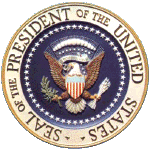 |
President of
the United States
The United States Constitution established the government of the
United States. The founding fathers feared a concentration of
power so they divided it between the three branches of the
government - the Executive, the Legislative and the Judicial.
The President of the United States is the
nation's Chief Executive. He has the responsibility of the
day-to-day running of the country. The Constitution also
appoints him Commander-in-Chief of all the nation's military forces.
The President is limited to what he can do in
this regard. Under the Constitution, only the Legislative
Branch - the Congress - has the right to declare war. It
also authorizes funds, including that appropriated to the military
and any actions it may have to take. In recent
years, Congress has declined to formally declare war, but has instead
passed resolutions authorizing the President to take military
action. Examples include the Korean, Viet Nam, and both Gulf Wars.
Timing was so critical during the Cold War that
Congress passed the Emergency War Powers Act. It gave the
Present the authority to launch America's nuclear strike force in
the event of an enemy attack. The Strategic Air Command was
under his direct operational control. In the event the President
ever needed to use that power, he bypassed the Department of Defense,
the Department of the Air Force, the United States Air Force and
communicated his orders directly to Strategic Air Command
Headquarters. |
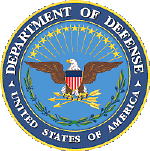 |
Dept of
Defense
The United States has always kept its military forces under civilian
control. For over 150 years, the War (Army) Department
and the Navy Department were separate cabinet level departments.
That meant that each was independent of the other and its respective
secretary sat on the Presidential Cabinet.
World War II made it obvious that much closer
coordination was needed between the two departments. The War
also saw tremendous expansion of the army air forces and often large
units were placed under the command of army generals that knew
little about how to properly use air power. It was
obvious that America's air forces needed to be a separate arm of the
nation's military.
These problems and many others were resolved by the
National Defense Act of 1946. It created the United States
Department of Defense. It is managed by the Secretary of
Defense. He is a member of the Presidential Cabinet and is responsible
only to him.
The National Defense Act also created the United States Air Force. It, along with the Army and
Navy departments are sub-departments under the Defense Department.
They are not cabinet level departments. Each has its own Chief
of Staff and as the Joint Chiefs of Staff they regularly meet to
coordinate their efforts. |
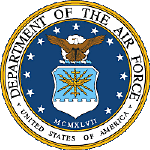 |
U.S. Air
Force
The United States Air Force was created by the National Defense Act
of 1946.
The Secretary of the Air Force is responsible for the
management of the Air Force. He reports to the Secretary of Defense.
The Air Force Chief of Staff (it's highest ranking officer) is
subordinate to the Secretary of the Air Force. The Air Force is divided into major commands, based on mission.
When the Air Force was first established they included the Air
Defense Command (protecting the homeland), the Tactical Air Command
(offensive fighter and attack aircraft operations), and the Military Air Transport
Command (transported materials, supplies and people.) The
commands have since been reorganized. For example, ADC, TAC
and the remnants of SAC have been combined into the Air Combat
Command. |
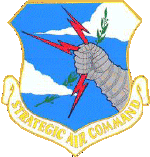 |
Strategic Air Command
The Strategic Air Command was established a year earlier than the
United States Air Force. It's roles were then strategic
bombardment, long range reconnaissance, mapping and weather
reporting. It soon became America's primary deterrent force.
SAC was a unique military force, because it bypassed the
normal chain of command. It was under the direct operational
control of the President of the United States. He was the only
person authorized to launch its aircraft and missiles. However
it was under the administrative control of the Air Force.
SAC's headquarters were at Offutt AFB, Nebraska. |
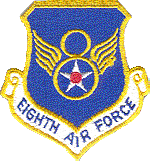 |
Numbered Air Forces
SAC was divided into five numbered Air Forces. This section
identifies them and their mission. Each had its own command
post. |
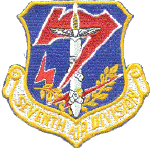 |
Air Divisions
The Numbered Air Forces were then divided into Air Divisions.
These were administrative organizations that usually commanded more
than one wing. There is a page dedicated to each air
divisions, giving its assignments and component units. |
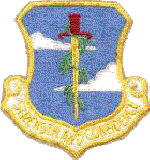 |
Wings
The wing was SAC's basic operational unit. Each of the wings is the
subject of a separate history.
See
Wing Histories..
|
|
|
